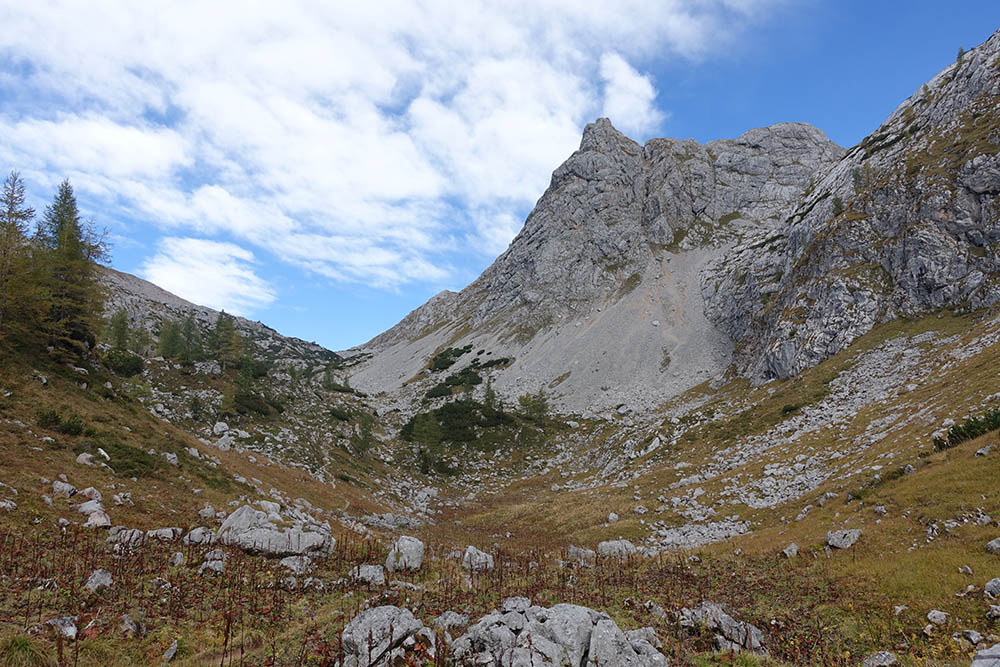Abandoned alpine pastures
In the Berchtesgaden National Park, alpine pasture farming has a centuries-old tradition. The heyday of this type of farming was recorded in the 18th century, declining after that till the end oft the 19th century. During that time numerous, alpine pastures were abonded, mainly due to economic reasons. Today, numerous signs of former alpine farming can be found in the core zone - from ruins of derelict mountain huts to overgrown pastures and their typical vegetation.

Remains of the barracks foundation walls at the lake Seeleinsee
According to the National Park plan, the Berchtesgaden National Park has the task of observing the development in formerly anthropogenic influenced ecosystems - such as the habitat of abandoned alpine pastures. These investigations serve as contributions to the recording and assessment of biodiversity in the abandoned alpine pastures and to the analysis of natural processes in the formerly managed alpine pastures, some of which were abandoned more than 100 years ago.
The abandoned alpine pastures are distributed across different altitude levels - from the valley to above the tree line in the alpine level. These areas offer the possibility to study different plant communities, their composition and species diversity at different altitudes and to document the undisturbed development after abandonment. Another goal is to extend the monitoring system of the Berchtesgaden National Park to include the abandoned alpine pastures in order to observe the vegetation in its structure and dynamics in the longer term. In addition to the vegetation studies, the history of the individual abandoned alpine pastures are collected in the archives.
Contact:
Doris Huber
Botany, vegetation monitoring and database, GIS.